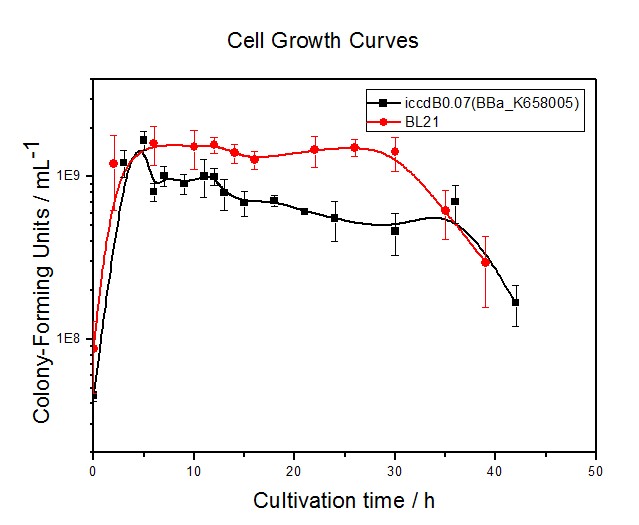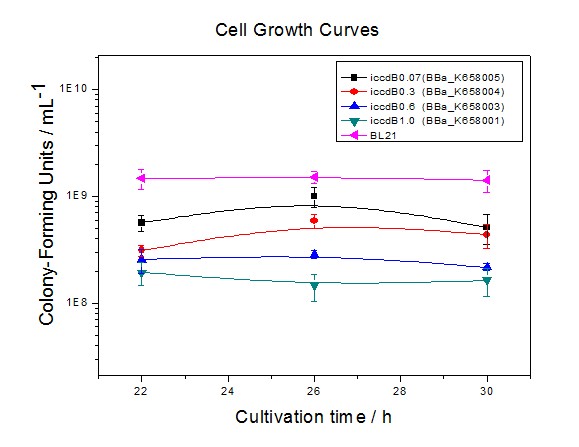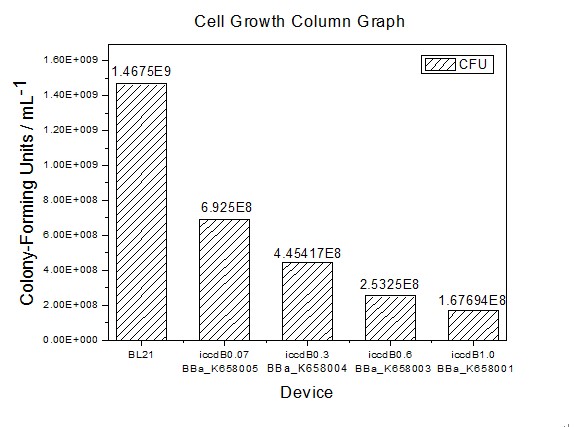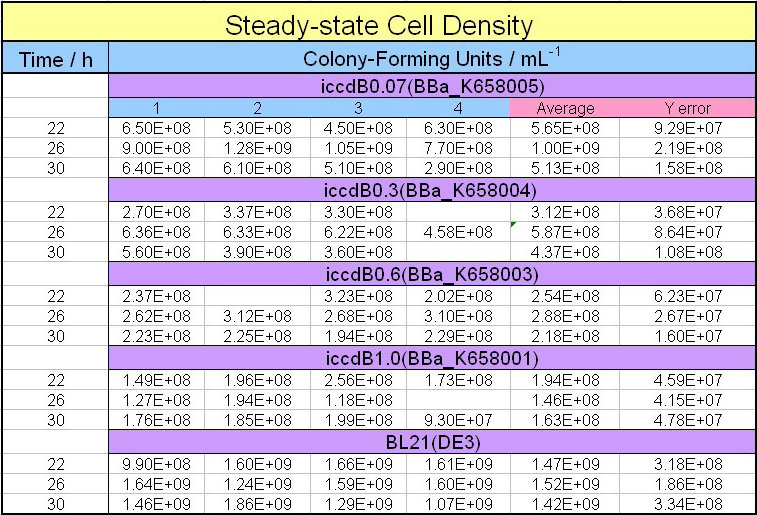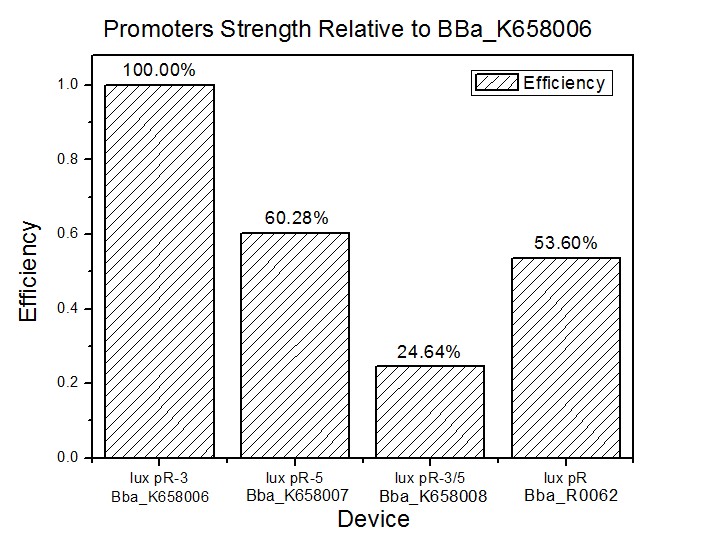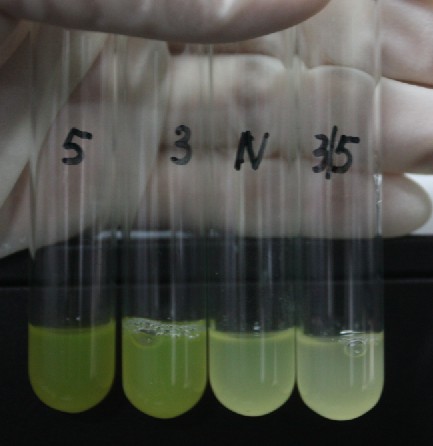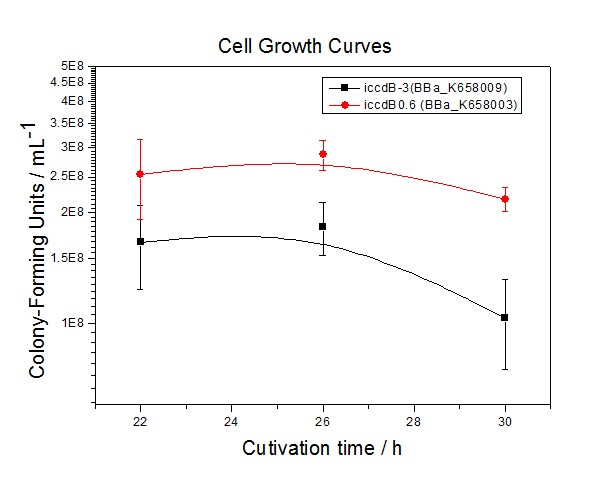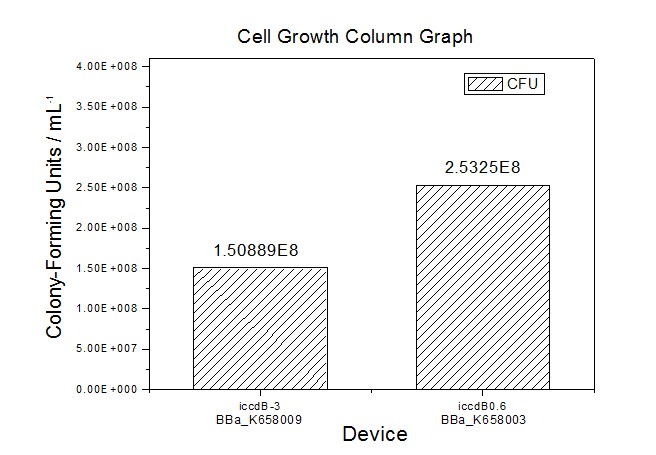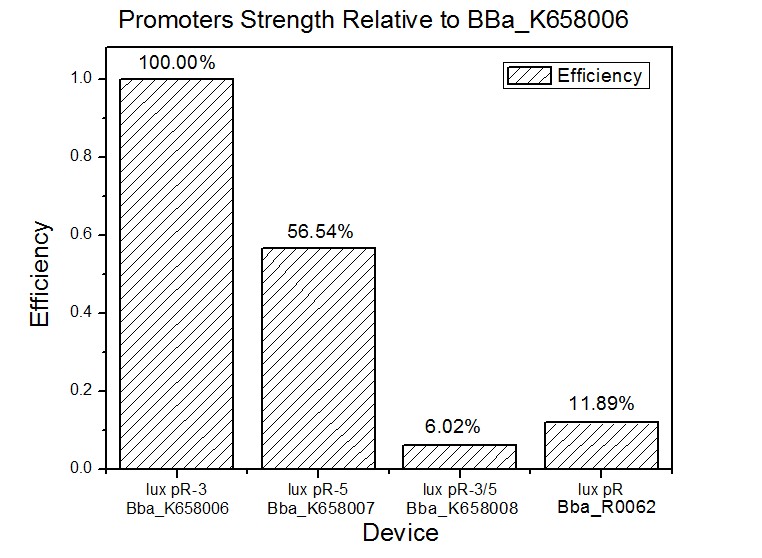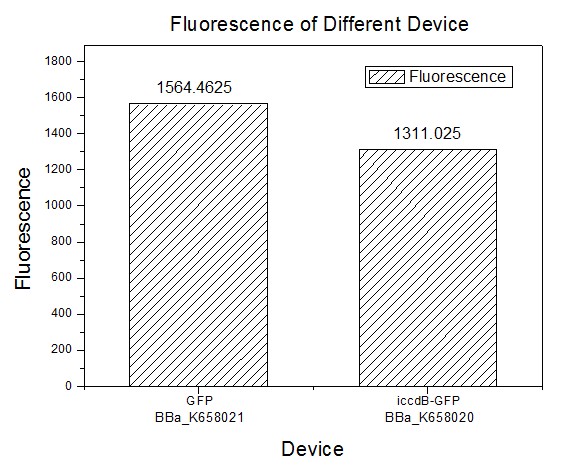Team:XMU-China/Result
From 2011.igem.org
(Difference between revisions)
(→Strength of promoter lux pR and its mutants) |
|||
| Line 37: | Line 37: | ||
The results are shown in following figures: | The results are shown in following figures: | ||
| - | |||
[[Image:XMU_China_118.jpg|left|Figure 5 Efficiency of promoter lux pR (BBa_R0062) and its three mutants | [[Image:XMU_China_118.jpg|left|Figure 5 Efficiency of promoter lux pR (BBa_R0062) and its three mutants | ||
| Line 51: | Line 50: | ||
As is shown in figure 5, promoter lux pR-3 has the highest strength of the four. Mutation at position 3 might lower the threshold for the binding reaction between LuxR/AHL protein complex and promoter lux pR, which starts the Quorum Sensing system at a relatively earlier period with a lower cell density compared with circuits regulated by wild type promoter lux pR (BBa_R0062). The earlier the QS system is started, the more GFP might be produced, leading to a higher fluorescence intensity at steady state. | As is shown in figure 5, promoter lux pR-3 has the highest strength of the four. Mutation at position 3 might lower the threshold for the binding reaction between LuxR/AHL protein complex and promoter lux pR, which starts the Quorum Sensing system at a relatively earlier period with a lower cell density compared with circuits regulated by wild type promoter lux pR (BBa_R0062). The earlier the QS system is started, the more GFP might be produced, leading to a higher fluorescence intensity at steady state. | ||
| - | |||
==Population-control devices with mutated promoters== | ==Population-control devices with mutated promoters== | ||
Revision as of 10:54, 28 October 2011
 "
"

